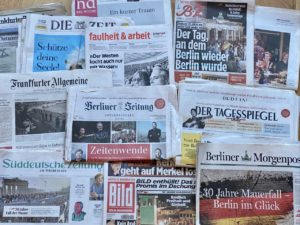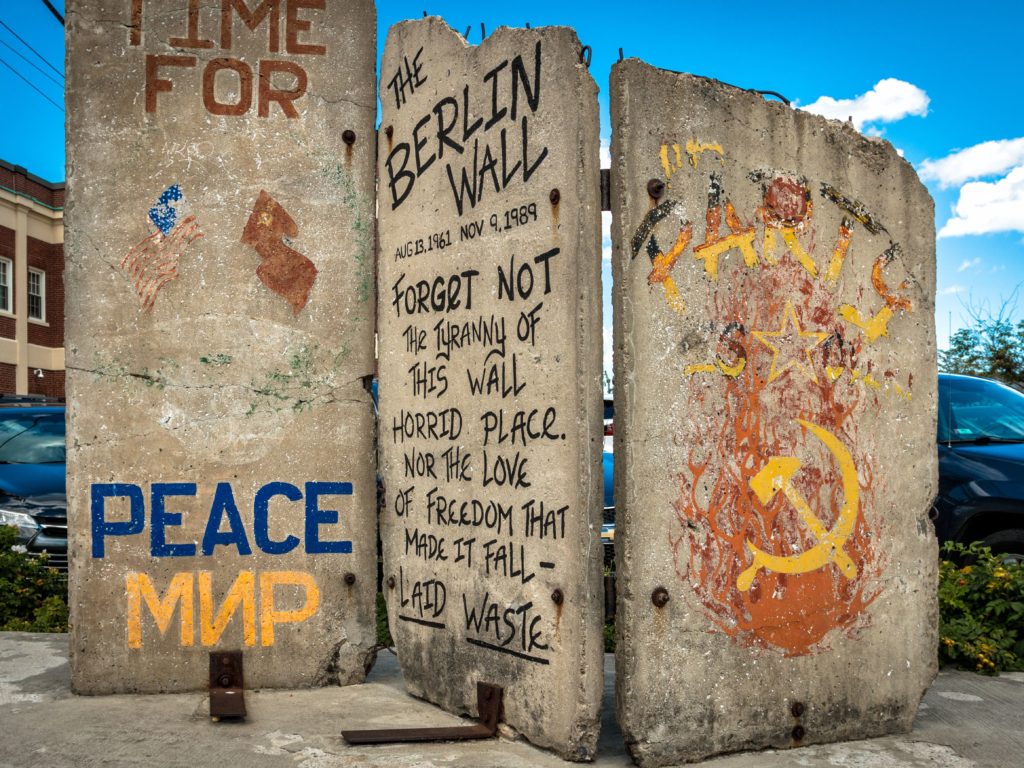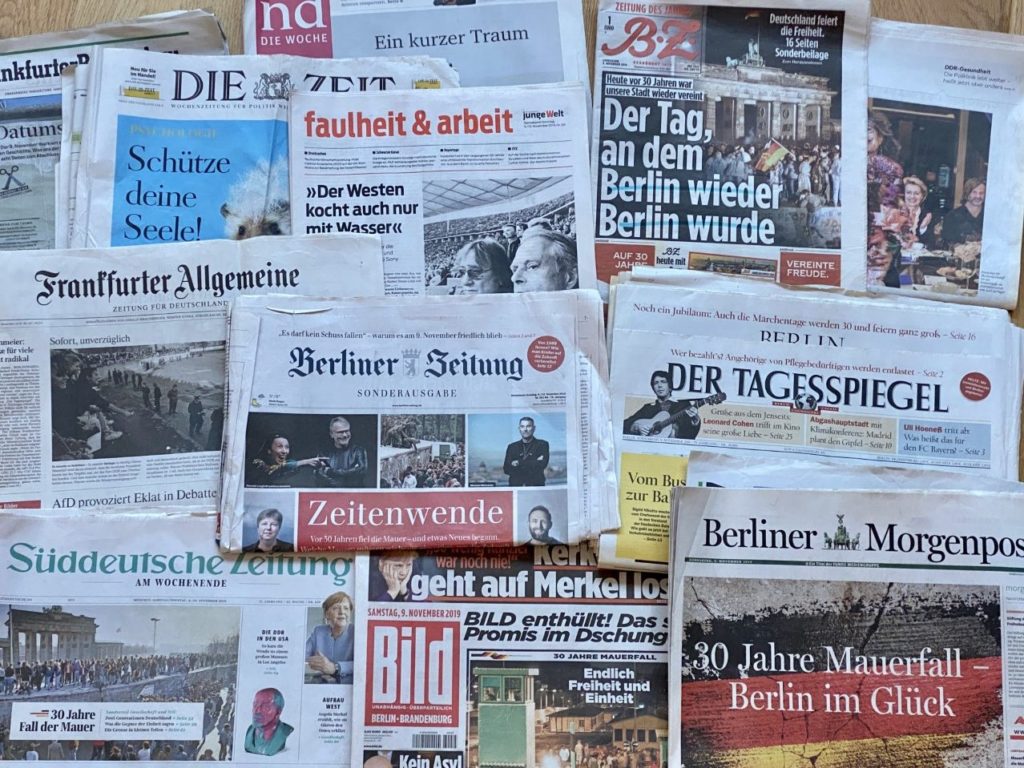In their article “A ‘reunification’ of memories? An analysis of German media’s coverage of the 30th anniversary of the fall of the Berlin Wall,” authors Andrei Zavadski and Anna Litvinenko delve into German media narratives around the 30-year milestone since the fall of the Berlin Wall to understand prevailing attitudes towards ‘reunification.’ Through an exploration of mainstream newspapers across the political spectrum, they unearth a diverse range of perspectives that highlight the ongoing challenges in reconciling the nation’s divided past. Their analysis reveals the complex interplay between triumphant narratives, acknowledgment of Eastern grievances, and lingering East-West divides that shape public discourse, underscoring how the journey towards cultural reunification remains unfinished.
A symbol of this discussion is the Humboldt Forum, a museum complex inaugurated in July 2020, standing as a tangible emblem of Germany’s complex historical narrative. Nestled between the remnants of a royal palace and the GDR’s parliamentary building, this development sparked debates on Germany’s handling of GDR memories, with critics seeing it as an attempt to erase the icons of past divisions. The authors delve deeper, examining the German media’s narrative during the 30th anniversary of the Wall’s fall to understand the prevailing attitudes towards ‘reunification.’
Their exploration across mainstream newspapers with varied political affiliations reveals a range of narratives, showcasing the ongoing challenges in coming to terms with the era of division. Conservative outlets celebrated the freedom ushered by the Wall’s demise but also highlighted concerns about current threats to this freedom. On the other hand, left-liberal platforms provided more room to Eastern viewpoints and grievances. Media channels following in the footsteps of East German state outlets criticized the dominant Western narrative on reunification history.
The analysis highlights instances of triumph, economic imbalances, and lingering East-West discord that shape public discourse, leading the authors to suggest that the journey towards cultural reunification is still underway. The conversation also delves into the delicate balance of acknowledging Eastern hardship while critiquing the GDR regime, as mainstream media navigate through different modes of remembering.
By unearthing the diverse threads of remembrance, the examination illuminates the deep-seated impacts of the past on Germany’s collective memory. It mirrors the nation’s continuous effort in grappling with history, unpacking public dialogue to disclose the ongoing negotiation of contrasting narratives. The tension between recognizing Eastern challenges and condemning the totalitarian past underscores the existing narrative disparity, emphasizing a need for more open and nuanced dialogue to bridge the persistent divide. Through a closer look at media narratives, the analysis accentuates Germany’s enduring endeavour to harmonize opposing historical viewpoints, thus promoting a more inclusive discourse conducive to societal cohesion.



